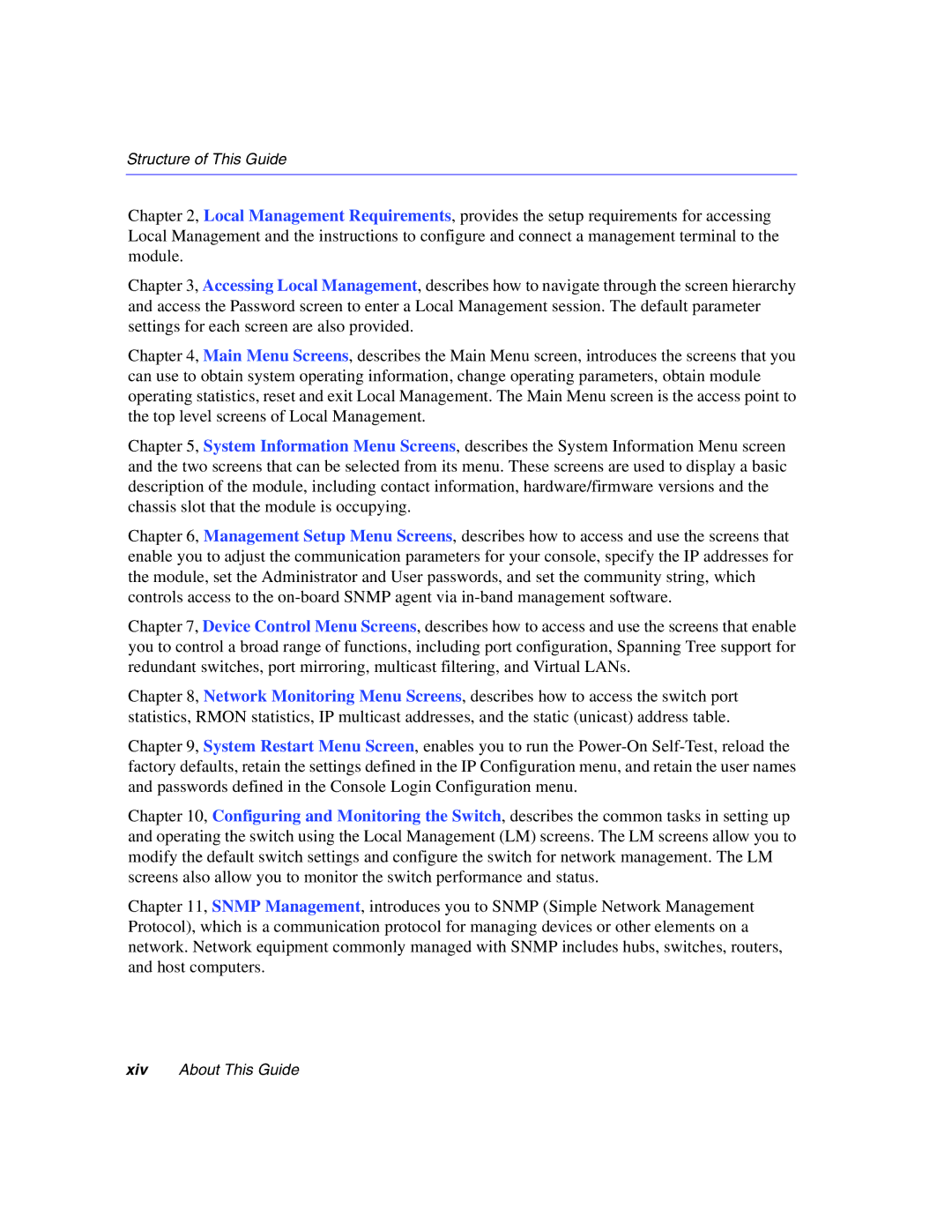Structure of This Guide
Chapter 2, Local Management Requirements, provides the setup requirements for accessing Local Management and the instructions to configure and connect a management terminal to the module.
Chapter 3, Accessing Local Management, describes how to navigate through the screen hierarchy and access the Password screen to enter a Local Management session. The default parameter settings for each screen are also provided.
Chapter 4, Main Menu Screens, describes the Main Menu screen, introduces the screens that you can use to obtain system operating information, change operating parameters, obtain module operating statistics, reset and exit Local Management. The Main Menu screen is the access point to the top level screens of Local Management.
Chapter 5, System Information Menu Screens, describes the System Information Menu screen and the two screens that can be selected from its menu. These screens are used to display a basic description of the module, including contact information, hardware/firmware versions and the chassis slot that the module is occupying.
Chapter 6, Management Setup Menu Screens, describes how to access and use the screens that enable you to adjust the communication parameters for your console, specify the IP addresses for the module, set the Administrator and User passwords, and set the community string, which controls access to the
Chapter 7, Device Control Menu Screens, describes how to access and use the screens that enable you to control a broad range of functions, including port configuration, Spanning Tree support for redundant switches, port mirroring, multicast filtering, and Virtual LANs.
Chapter 8, Network Monitoring Menu Screens, describes how to access the switch port statistics, RMON statistics, IP multicast addresses, and the static (unicast) address table.
Chapter 9, System Restart Menu Screen, enables you to run the
Chapter 10, Configuring and Monitoring the Switch, describes the common tasks in setting up and operating the switch using the Local Management (LM) screens. The LM screens allow you to modify the default switch settings and configure the switch for network management. The LM screens also allow you to monitor the switch performance and status.
Chapter 11, SNMP Management, introduces you to SNMP (Simple Network Management Protocol), which is a communication protocol for managing devices or other elements on a network. Network equipment commonly managed with SNMP includes hubs, switches, routers, and host computers.
xivAbout This Guide
